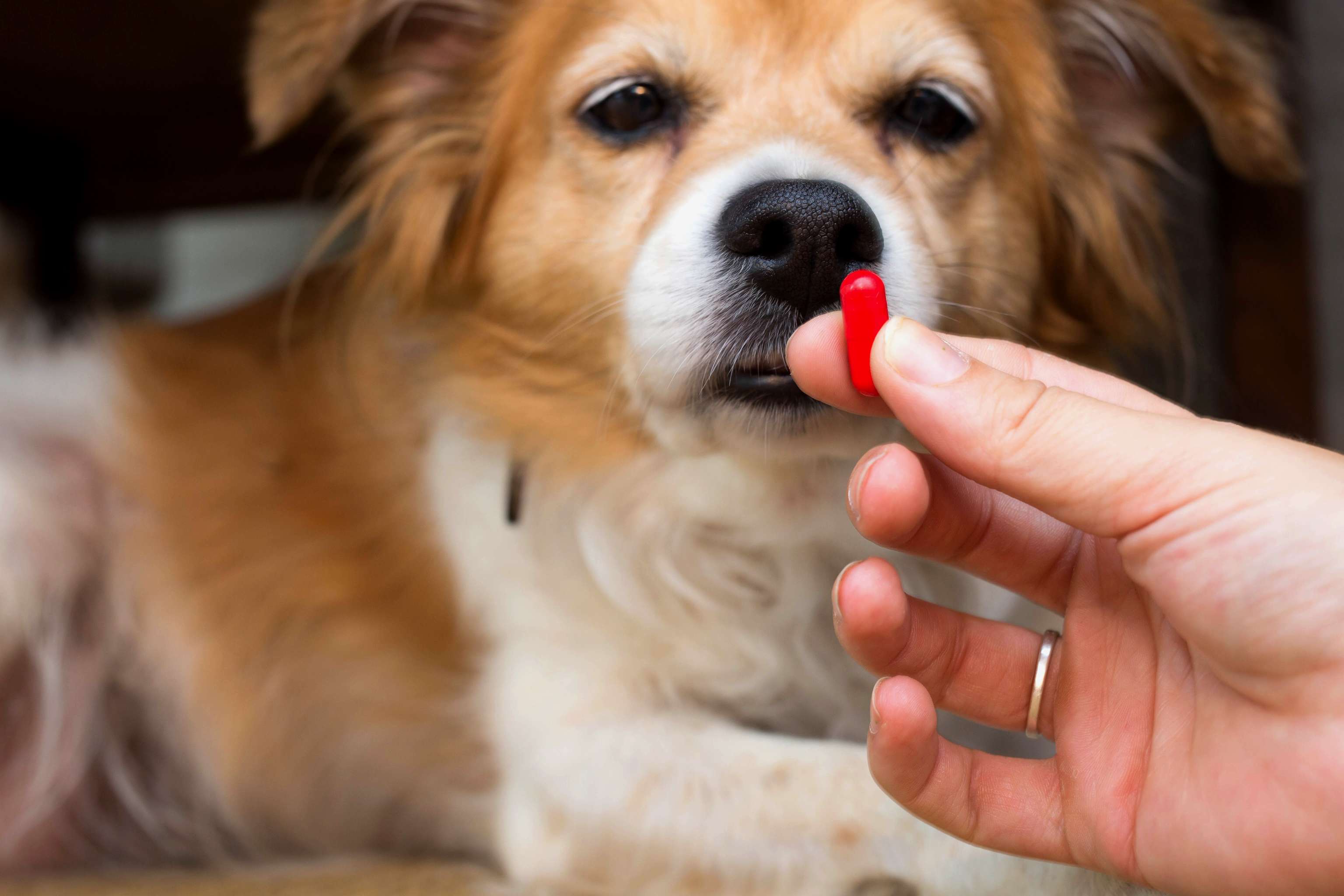Medication for four paws

What to watch out for:
Animals usually require a different dosage of a medication than humans, which is why self-administered medication can be very dangerous. As a layman, it is very easy to misinterpret the symptoms that our pet shows and make a wrong diagnosis due to the lack of communication.
Paracetamol and Ibuprofen:
For both the dog and the cat, acetaminophen is a potential toxicant. In dogs, an intake of 200mg/kg of the active ingredient is sufficient to detect clear symptoms of poisoning. In cats, the amount is much lower at only 60mg/kg of paracetamol.
Normally, most painkillers should be broken down in the liver to non-toxic substances. These would then be excreted through the bile and urine.
Within 30 minutes of ingestion, the toxic dose is in the animal's bloodstream and inhibits oxygen from combining with erythrocytes (i.e. red blood cells) and hepatocytes (i.e. liver cells). The haemoglobin, i.e. the proteins of the red blood cells, can only fulfil the oxygen transport function if the iron contained therein is present in bivalent form. Paracetamol, however, causes the iron to remain in its oxidised form and is therefore unable to transport oxygen. Respiratory distress and bluish mucous membranes may be seen in the pet after 1 to 4 hours. Reasons for ingestion of the active ingredients in dogs and cats may be either self-swallowing of easily accessible tablets or by administration by the pet owners themselves.
Ibuprofen can also be toxic to both quadrupeds if ingested. Oral administration allows the drug to enter the mucous membranes of the animals, where it can cause severe irritation. Bloody vomitus or bloody diarrhea are possible courses. Higher doses may cause the animal to lower its own body temperature with shock. Heart palpitations and unconsciousness are the result.
In either case, a veterinarian should be sought as soon as possible or more serious consequences may develop.
Other toxic agents:
Very often, poisoning also occurs due to food and stimulants, which are considered harmless to humans. These include the substances caffeine and theophylline or theobromine, which can be found in coffee (up to 200mg caffeine per cup), tea (up to 100mg caffeine per cup), cocoa (14-20mg theobromine per gram) and chocolate (1.5 to 15mg theobromine per gram). Even a few hundred milligrams of these substances can be lethal to pets.
Various coumarin derivatives, which are added to perfumes, tobacco products and cosmetics, can also cause toxic effects.
Store medications properly:
It is especially important to store medications in a safe place, as described in almost all package inserts. Otherwise, there is a risk that your own pet, without the owner's supervision, will identify it as food and eat it. For this reason, the packages should be kept well closed in places that are not easily accessible and should not be eaten in the immediate vicinity of the pet itself.
Timely visit to the vet:
In any case, a veterinarian should always be consulted, because the correct advice, diagnosis, dosage and administration of a medication is left to the professional expert. If an acute situation arises outside the opening hours of the veterinary practice, the emergency service should be visited.
Sources
- Dr. Jörg R. Aschenbach, Prof. Dr. Gotthold Gäbel, Prof. Dr. Arwid Daugschies (2007): Leipziger Blaue Hefte, LBH: Proceedings 4. Leipziger Tierärztekongress
- Acetaminophenintoxikation beim Hund (Leipziger Blaue Hefte)
- Arzneimittel für Tiere (Tierarztverband Deutschland)
- Darf ich meinem Haustier Paracetamol oder Ibuprofen geben? (Deine Tierwelt)

Danilo Glisic
Last updated on 08.12.2020
Your personal medication assistant
Browse our extensive database of medications from A-Z, including effects, side effects, and dosage.
All active ingredients with their effects, applications, and side effects, as well as the medications they are contained in.
Symptoms, causes, and treatments for common diseases and injuries.
The presented content does not replace the original package insert of the medication, especially regarding the dosage and effects of individual products. We cannot assume liability for the accuracy of the data, as the data has been partially converted automatically. Always consult a doctor for diagnoses and other health-related questions.
© medikamio